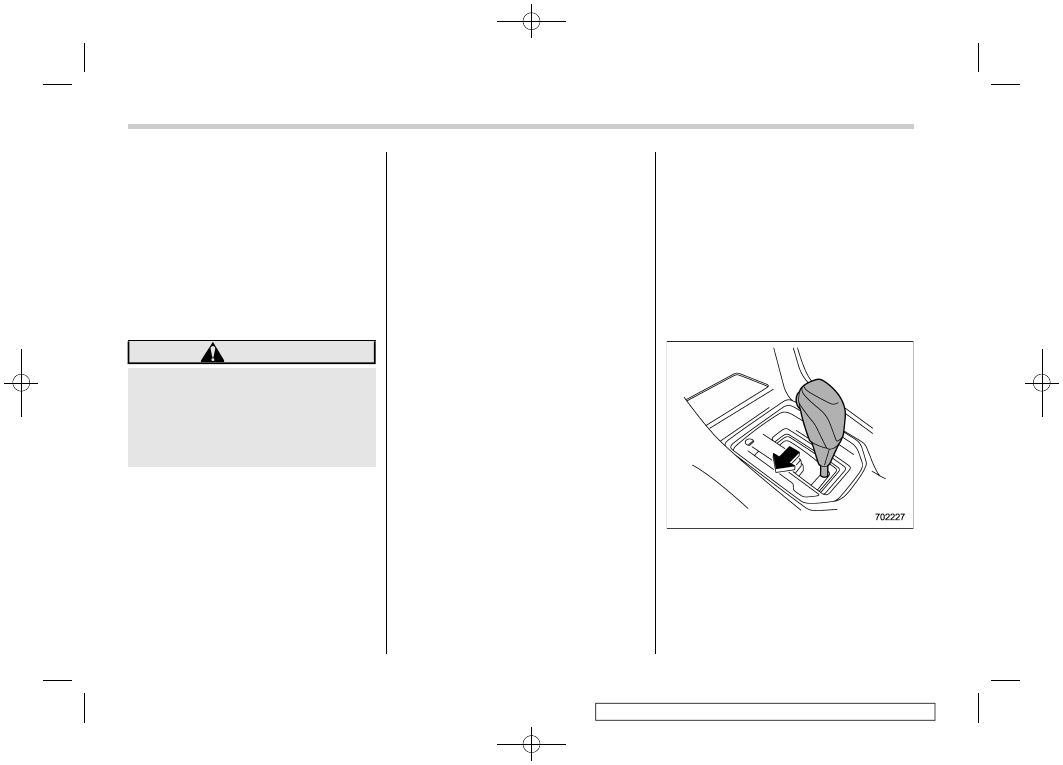Subaru Forester (2019 year). Instruction - part 20

(314,1)
北米Model "A8240BE-B" EDITED: 2018/ 7/ 5
!
N (Neutral)
This position is for restarting a stalled
engine. In this position, the transmission is
neutral, meaning that the wheels and
transmission are not locked. Therefore,
the vehicle will roll freely, even on the
slightest incline unless the parking brake
or foot brake is applied.
Avoid coasting with the transmission in
neutral. Engine braking has no effect in
this condition.
WARNING
Do not drive the vehicle with the
select lever in the “N” (neutral)
position. Engine braking has no
effect in this condition and the risk
of an accident is consequently in-
creased.
NOTE
If the select lever is in the “N” position
when you stop the engine for parking,
you may not subsequently be able to
move it to the “R” and “P” positions. If
this happens, turn the ignition switch to
the “ON” position. You will then be able
to move the select lever to the “P”
position.
!
D (Drive)
This position is for normal driving. The
transmission shifts automatically and con-
tinuously into a suitable gear according to
the vehicle speed and the acceleration you
require. Also, while driving up and down a
hill, the transmission assists and controls
the driving performance and engine brak-
ing while corresponding to the road grade.
When more acceleration is required in the
“D” position, depress the accelerator pedal
fully to the floor and hold that position. The
transmission will automatically downshift.
In this case, the transmission will operate
like a conventional automatic transmis-
sion. When you release the pedal, the
transmission will return to the original gear
position.
For models with instruction mode, if one of the
shift paddles behind the steering wheel is
operated while driving in the “D” position,
the transmission will temporarily switch to
the instruction mode. In this mode, you can
shift into any gear position using the shift
paddles. For details about the instruction
mode, refer to “Selection of manual mode”
FP312. Once the vehicle speed stabi-
lizes, the transmission will switch from the
manual mode back to the “D” position for
normal driving.
&
Selection of instruction mode (if
equipped)
Type A
Continuously variable transmission
312